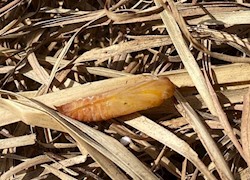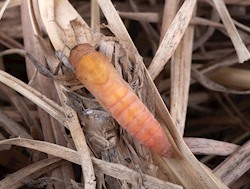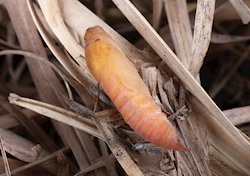Dusted Skippers are almost always found in localized colonies that are near patches of bluestem and broomsedge grasses. Sightings are usually scarce, and according to NatureServe, many colonies probably produce only a few dozen adults per year. Most populations depend on human management to maintain the necessary open, grassy habitat they require. Periodic controlled burns are essential in some areas, but the use of airports and power-line cuts are also reported. Small populations are particularly at risk of disappearing due to habitat loss.
Male Dusted Skippers perch on or close to the ground. Females fly low through grasses and deposit their eggs on host grass leaves and stems. These lifestyle traits are one of the reasons that open, grassy areas that often include bare ground or rock are essential. Dusted Skippers are seldom found where grassy groundcovers are thick. Caterpillars initially draw a grass blade together with silk and rest in the fold. As they grow, they construct larger leaf shelters. Final instars move to the base of the grass and form a tubular tunnel by silking together ripened stems. They eventually seal the shelter with silk and overwinter within it, completing development in the spring. Most of the more natural habitats are subject to fire. If the species persists in that general area, caterpillars must either survive the burn or adults must be good colonists. Since there is no evidence that Dusted Skipper larvae devise subterranean shelters, the latter is probably true.
Dusted Skippers range across most of the eastern and central United States. In Florida and the barrier island of North Carolina, two separate species (Loammi and Crystal Skipppers) have recently been recognized; they were formerly considered subspecies of Dusted Skipper. In Alabama, Dusted Skippers are primarily known from a few locations in the northeasten part of the state.






.JPG)











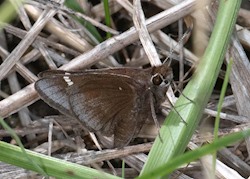


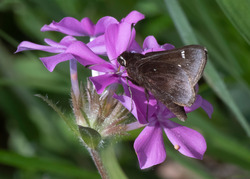

.jpg)







-copy.jpg)














